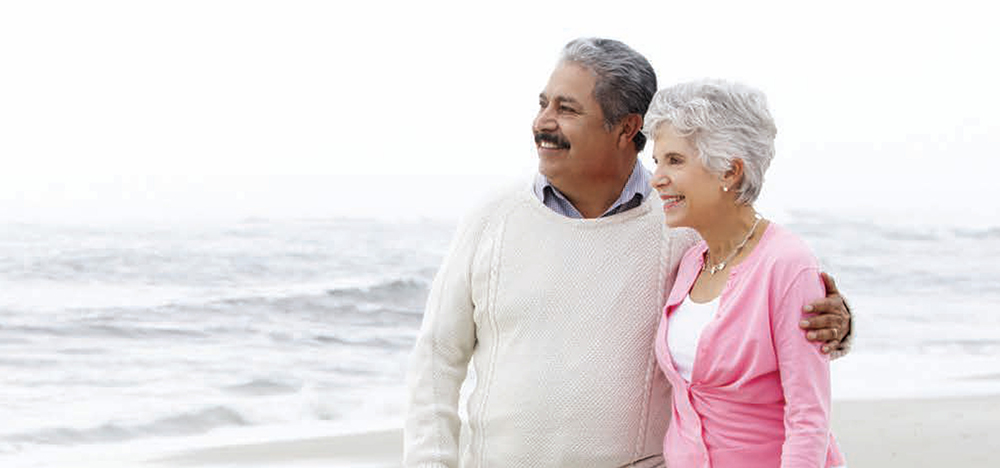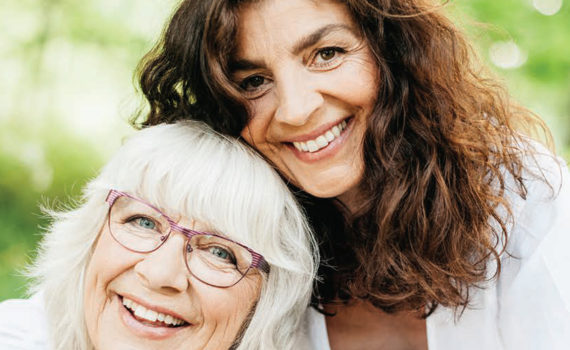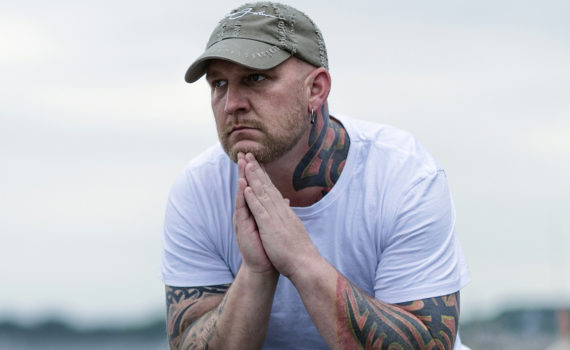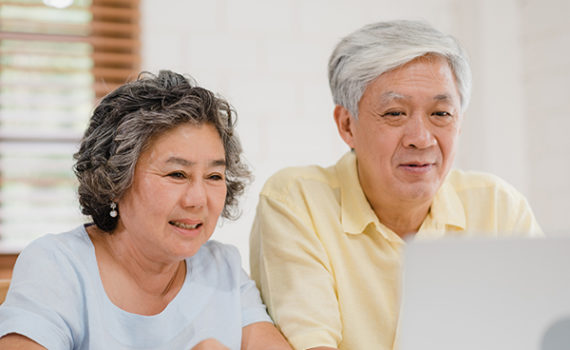
More than 400,000 Canadians live with the long-term effects of a stroke.1 That means there are potentially more than 400,000 caregivers who also need help and support.
Sometimes we forget that the caregivers themselves have experienced significant life changes after their loved one has suffered a stroke. They too struggle with meeting new challenges and are searching for new paths to happiness, health, and independence. In order for caregivers to effectively help with their stroke survivor’s rehabilitation and life circumstances, they must first look after their own physical and mental wellbeing.
A caregiver’s attitude is important to the health and wellbeing of the person for whom they care for. As a caregiver, it is important for you to take care of yourself, as well as your stroke survivor. Eat well, get enough sleep, manage stress, and continue to make time for the things you enjoy. You are not being selfish by tending to your own needs, rather you are ensuring that you can be the best possible caregiver without compromising your own wellbeing.
The human brain is much more adaptive than once believed. Advances in our knowledge of neuroplasticity – the brain’s lifelong ability to reorganize neural pathways based on new experiences – suggests our brains are not hardwired with fixed neuronal circuits; rather, they are responsive and flexible.2-3 This provides hope to stroke survivors and their caregivers. Recovery is always possible.
After Stroke is dedicated to supporting caregivers and stroke survivors alike. We hope this guide can serve as a tool to help you through your journey as a caregiver. Please contact us to find programs and services in your community.
“I made it my mission to find all the programs and services offered in the community that could benefit Beverly. It’s amazing what’s available for people with disabilities. Bev has tried tai chi, five pin bowling, curling, and lawn bowling. I also connected with our local Community Care access Centre (CCAC) – they have lots of programs, and can help you find the right services.” – BILL PRITCHARD
Spasticity
Occurs when a stroke damages a part of the brain that controls certain muscles in the body and the muscles become tight and stiff and resist being stretched.4
Aphasia
A brain injury, such as a stroke, can damage the left side of the brain. This damage can cause aphasia. People with aphasia may have difficulty talking, understanding speech, reading and/or writing.5
Life as a Caregiver Carol’s Story: The Climb
“I have climbed three-quarters of the way up the mountain, and have picked up along the way a toolbox of coping skills and many loyal friends that will be there for me to share and use when I climb to the top of the mountain with the unknowns yet to come.”
Six and a half years ago Carol Miller-Hall received a phone call that would change her life in ways she never imagined. At the age of 49, her husband had suffered a stroke while driving a van. With that one phone call Carol went from being a typical spouse, just going about her every-day life, to being blindsided from this tragedy and becoming a caregiver to her husband. Just a year and a half after her husband’s stroke, Carol found herself speaking to a group of people telling her story – something she never imagined she would be doing.
“I had struggled to breathe, let alone put into words my experience and how I came to be a caregiver. I was still very much feeling raw with hurt. I learned from my caregiver support group that I was still in the very early stages of this change in my life, and that time was needed to heal. They were so, so right.”
Carol refers to herself as being at the bottom of a mountain and looking up at how long and hard her climb would be. With the help of friends and family she was given the strength to put one foot in front of the other, and began the seemingly impossible and exhausting climb to the mountain top. A pivotal moment in Carol’s caregiver journey occurred when a social worker told her that he didn’t know how to help her. She was in terrible grief, and didn’t know of any support groups that existed. Not long after that, Carol connected with the Guelph Wellington Stroke Recovery Chapter, which was in the early stages of starting a caregiver group.
“I will be forever grateful for the caregiver group that virtually saved me from feeling alone with this terrible thing called stroke, and handed me a bucket for my tears with compassion and understanding. You see, they knew just how I felt, and what I was going through.”
Carol talks about her feelings of grief, and how she seemed to dwell on blaming herself and taking on her husband’s hardship. She was grieving the loss of certain pieces of the man she once knew and loved, and was learning to accept the changes that came with him having a stroke. Carol encourages other caregivers to accept all the help that is offered to them and learn to ask questions, and recommends joining a support group to help with the journey and all that comes along with being a caregiver. As Carol expressed, you will reach points throughout your climb as a caregiver where it may seem impossible to continue. It is during these times of struggle and doubt that you must reach out and accept the support and love that groups, resources, and other caregivers have to offer. You can rest assured that you will one day reach the top of your own mountain, and maybe, like Carol, you will be able to share your climbing tools with others.
Catherine’s Story: New Opportunities
Catherine Eustace was only 14 years old when she had a massive stroke. Although her parents, Micheline and Ed, were divorced, they quickly committed to working together to help their daughter. Catherine’s stroke made her parents realize that nothing in life can be taken for granted, and that every moment must be cherished.
Ed, Micheline, and Catherine’s older sister Anne-Marie, took turns being with Catherine at the hospital, and later at the rehabilitation centre, and then at home. It hasn’t been easy, but nine years later, Catherine has overcome tremendous challenges, and is preparing to go to university.
When asked what helped, Micheline says, “We considered ourselves part of the rehabilitation team, together with doctors, nurses, and therapists. We constantly tried to learn as much as we could about stroke, and advocated on our daughter’s behalf, asking medical staff to find solutions for various problems. To receive help, most often we only needed to ask, but sometimes we had to be more persistent. We also sought and accepted support from everyone: our family, hospital, rehabilitation centre, and Catherine’s school. That way, the responsibilities were spread out, and nobody burned out.”
The key lesson Ed learned as a caregiver was to never give up and that improvement is always possible.
“For nine years, Catherine had spasticity in her left wrist and ankle, interfering with her ability to use her left hand and walk,” he says.
“We didn’t have a treatment for this. Only last year, Catherine’s godmother, a nurse, learned about some of the newer methods to treat spasticity, and we obtained a referral to a spasticity clinic. Now Catherine can raise her left arm above her head, and her left hand is stronger. She also walks with less of a limp. It just goes to show you that rehabilitation techniques are always advancing, and Catherine’s quality of life continues to improve.”
A stroke may change what a person can do, but everyone has different talents and strengths. So it becomes a process of rediscovery. “I had to give up snowboarding,” says Catherine, “but I discovered painting and golf. Immediately after the stroke, I was scared, and then depressed, but when I saw my parents full of hope and fighting for me, I also committed to my recovery. I had to work hard at physical therapy and at restarting my education after a two-year delay. At times, my life felt like constant work. But things are really looking optimistic now. I learned that hard work and commitment can make a big difference.”
Catherine and her parents demonstrate that love, commitment and optimism can help to better manage the shock and life change caused by stroke. A stroke can bring people together and encourage new opportunities and interests. You have the ability as a caregiver to inspire your loved one with strength, optimism and opportunity, and you can choose to become a part of the rehabilitation team and make the most out of a difficult situation.
The Impact of Stroke on Your Loved One
A stroke can cause damage to the brain either by interrupting blood flow to the brain or by causing the blood vessels in the brain to rupture.
This type of damage to the brain cells may impair their function, which may result in the loss of movement, sensation, and/or thought processes, including speech.6 The effects of a stroke vary, and the outcome depends on the area of the brain affected and the degree of damage. Individuals who have survived a stroke may experience any of the following symptoms:6
- Loss of control of movement and/or feeling in some parts of the body – This usually occurs on the side of the body opposite from the side of the brain affected by stroke
- Changes in muscle tone on the side affected by stroke – Some stroke survivors may lose the ability to contract their muscles, while others may experience involuntary muscle contractions
- Difficulty sitting, standing, or walking
- Reduced ability to balance
- Problems with speaking and/or understanding speech
- Confusion and/or poor memory
- Reduced control over their bladder or bowel
- Difficulty swallowing
- Reduced control over emotions
“At the age of 36, I now had to learn even the basics because the stroke had also caused a severe left side neuropathy and even damaged my vocal chords. My days of being a busy mom, carpooling, and taking my children to their sporting events were now replaced with learning how to conquer the most elementary tasks: learning how to walk, write, and even see.” – ANNA
- Heart and Stroke Foundation website (2015). STATISTICS. www.heartandstroke.com/site/c. ikIQLcMWJtE/b.3483991/k.34A8/Statistics.htm. Accessed on February 19, 2016.
- Brain Plasticity and Stroke Rehabilitation. American Heart Association & American Stroke Association. Retrived from http://stroke.ahajournals.org/content/31/1/223.full.
- Mang CS, Campbell KL, Ross CJ, et al. Promoting neuroplasticity for motor rehabilitation after stroke: considering the effects of aerobic exercise and genetic variation on brain-derived neurotrophic factor. Phys Ther 2013;93:1707-16.
- Beyond Stroke website. www.beyondstroke.ca/. Accessed on 23 February, 2016
- What is Aphasia? March of Dimes Canada website. www.marchofdimes.ca/EN/programs/ydac/Pages/ WhatisAphasia.aspx. Accessed on 11 March, 2016.
- Stroke – How physiotherapy can help. Physio Can Help website. http://physiocanhelp.ca/stroke-how-physiotherapy-can-help/. Accessed on February 10, 2016




